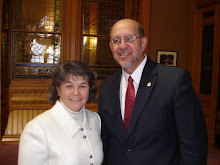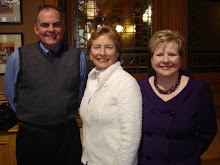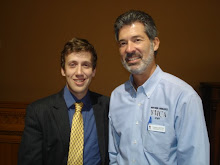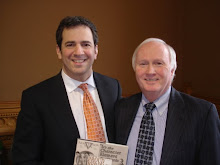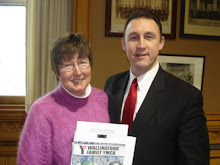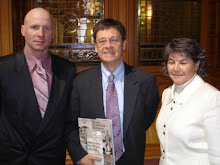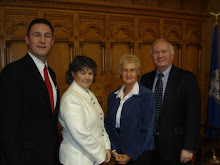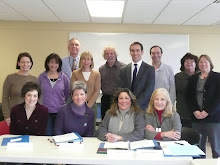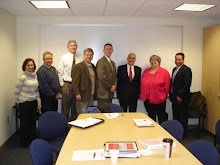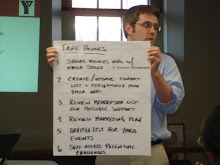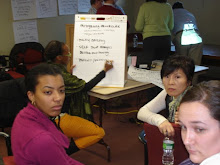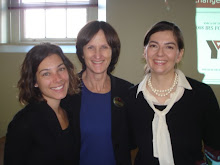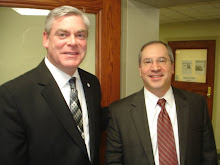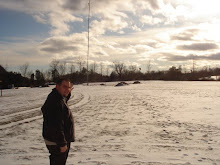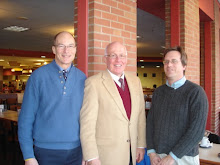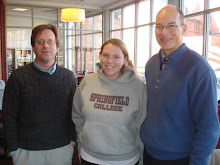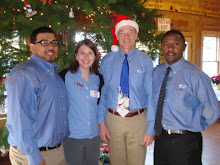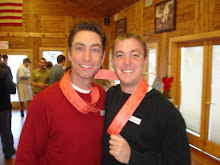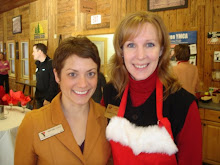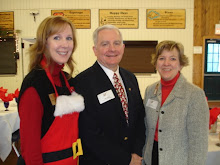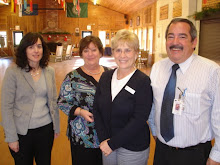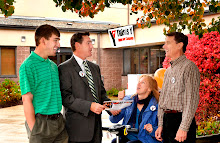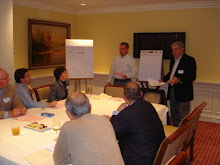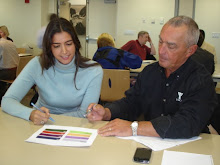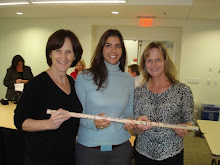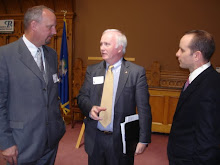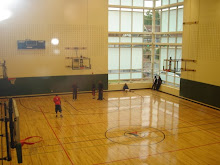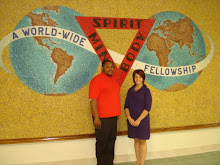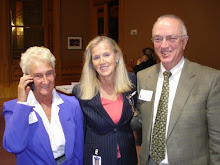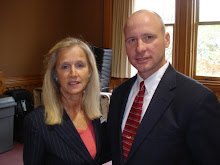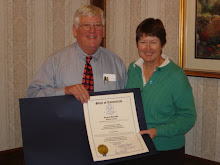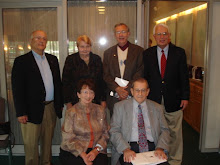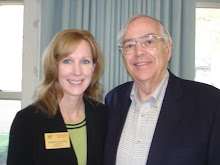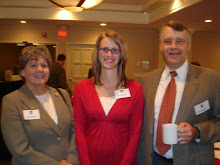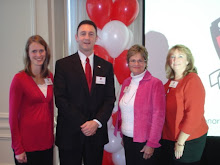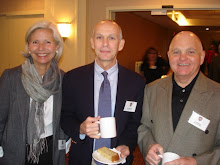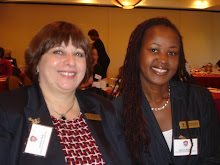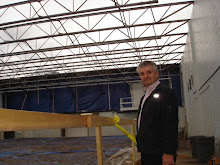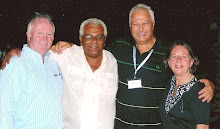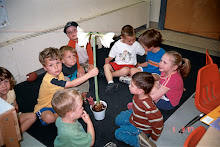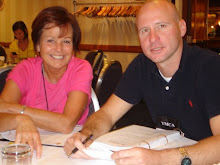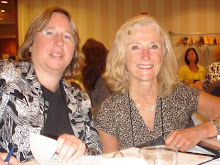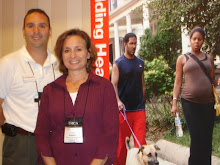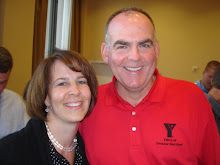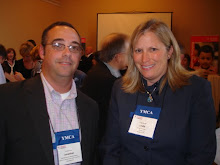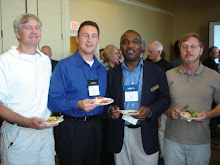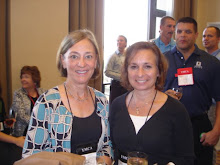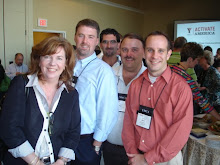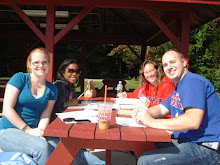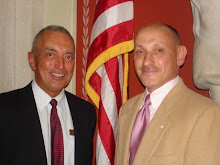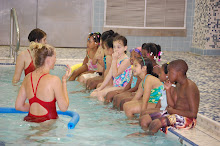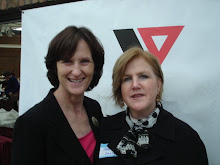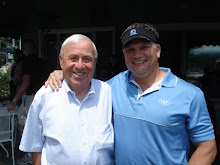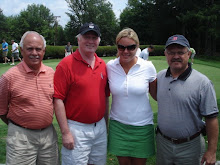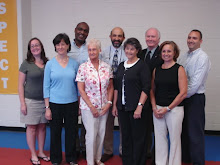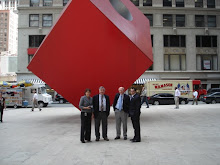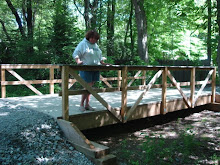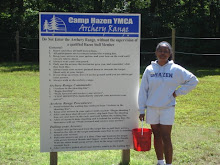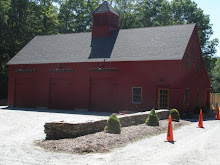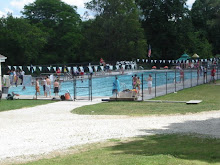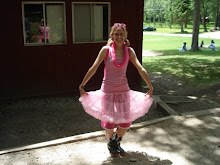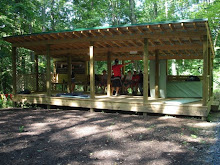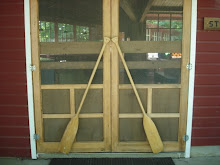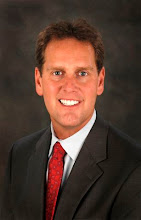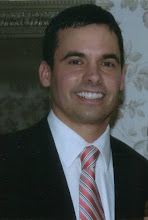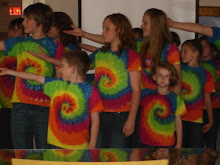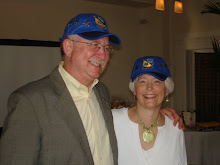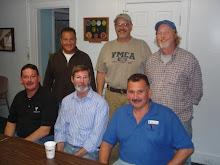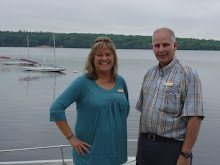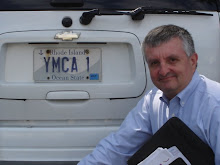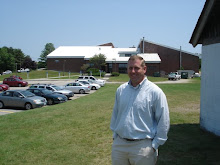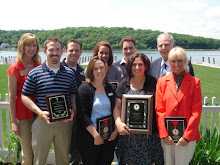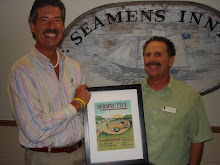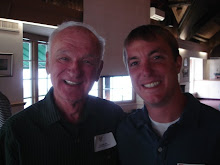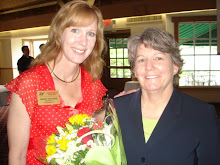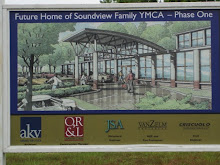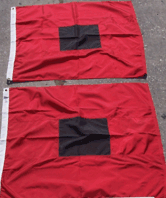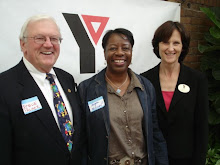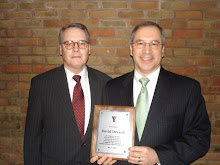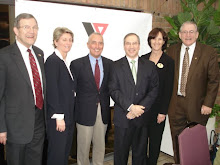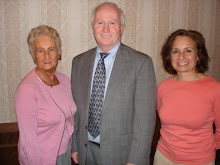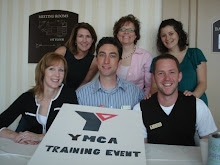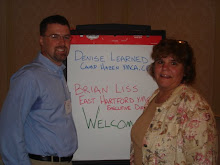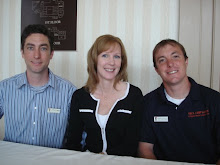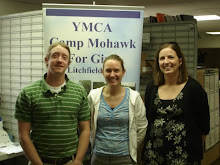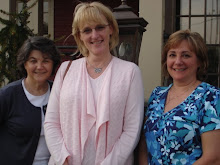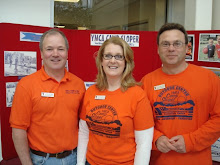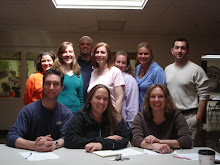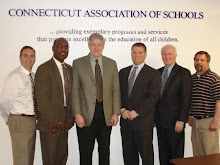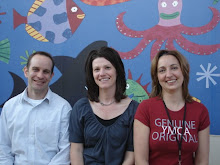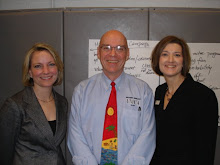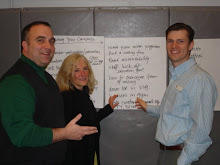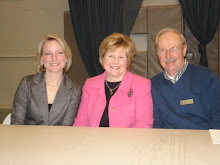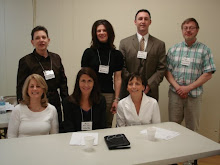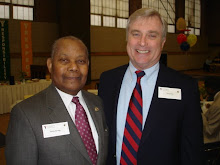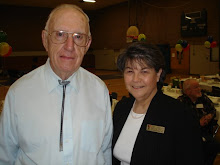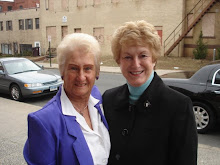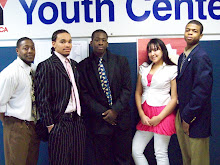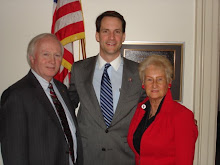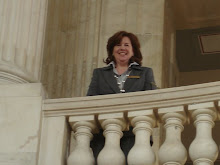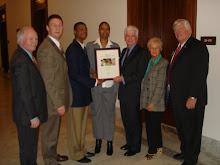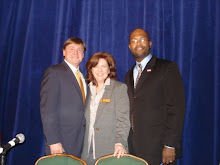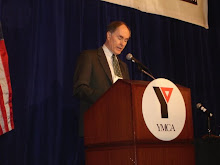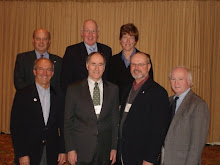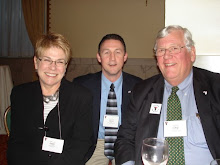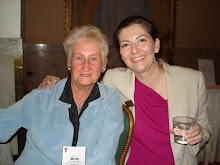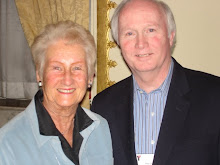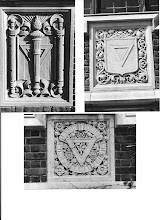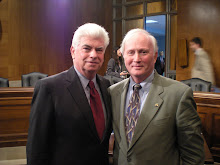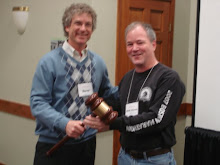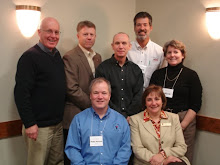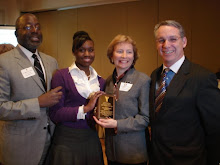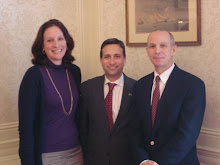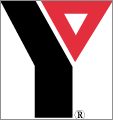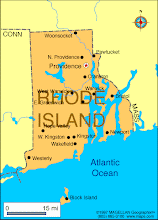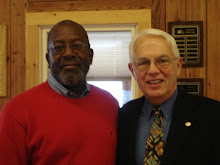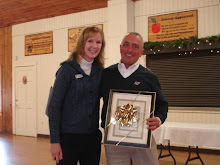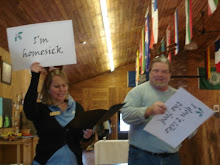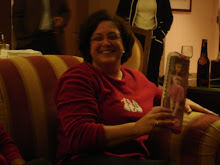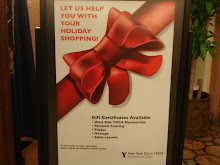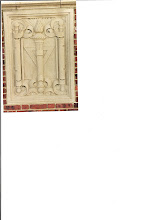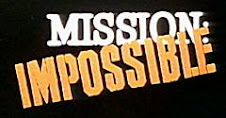Wednesday, January 28, 2009
Over 75 Years of Tradition and Off-The-Wall Fun
Paul "Bear" Bryant, Executive Director / CEO of YMCA Camp Sloane in Lakeville, Connecticut, has had fun restoring a 1952 M38 United States Army Jeep. Can you tell from this photo whether "Bear" is on the road from Seoul to Munsan-ni or on a wooded camp road at Camp Sloane?
Saturday, January 24, 2009
Connecticut YMCA Alliance Key Leaders' Dinner
One of the highlights of this year’s Connecticut YMCA Alliance Key Leaders’ Dinner was the prominent role YMCA youth leaders played in the recognition of the Connecticut YMCA Alliance’s Legislators of the Year.
Pictured (L-R): Kevin Washington, President, YMCA of Greater Hartford, Member of the Board of Directors of the National Council of the YMCA
Angela Dunnham, Secretary of the State, Connecticut Youth and Government program, Senior honor student at Weaver High School in Hartford
Connecticut State Representative Pamela Z. Sawyer, Legislator of the Year
In addition to State Representative Sawyer, the Connecticut YMCA Alliance also honored State Senator Joan V. Hartley and State Representative Patricia M. Widlitz, as Legislators of the Year
Pictured (L-R): Kevin Washington, President, YMCA of Greater Hartford, Member of the Board of Directors of the National Council of the YMCA
Angela Dunnham, Secretary of the State, Connecticut Youth and Government program, Senior honor student at Weaver High School in Hartford
Connecticut State Representative Pamela Z. Sawyer, Legislator of the Year
In addition to State Representative Sawyer, the Connecticut YMCA Alliance also honored State Senator Joan V. Hartley and State Representative Patricia M. Widlitz, as Legislators of the Year
Billboard Beckons in Bridgeport
Drive Northbound on Route 25 from the coast of Connecticut and you will view a billboard beckoning you to join the Bridgeport YMCA, a branch of the Central Connecticut Coast YMCA!
Bridgeport Branch Executive Tim Bartlett made the arrangements with Lamar for the prominent placement. For information on the creative communications, you can e-mail Tim at tbartlett@cccymca.org
Bridgeport Branch Executive Tim Bartlett made the arrangements with Lamar for the prominent placement. For information on the creative communications, you can e-mail Tim at tbartlett@cccymca.org
Monday, January 19, 2009
YMCA / WEIU - Rich Historical Profile
To many oldsters the "WEIU" attached to the Auburn YMCA-WEIU's name leaves them with a pang. Torn down in 1972, the stately four-story WEIU was a kindly haven for working women during an age when they needed it.
The "Women's Union," as it was also called, began as a refuge from the tumultuous Gilded Age, and a place for women to mature physically, mentally, and because the WEIU was a product of the Victorians, morally.
The red-brick building, across South Street from Auburn City Hall, may have been the best equipped WEIU in the country. It had a library, cafeteria, lounge, pool, gymnasium, meeting rooms, dormitory, smoking room "for gentlemen," and an Osborne Hall with a 32-electric-globe chandelier, that could accommodate banquets, lectures and stage productions.
By the middle of the Twentieth Century, working women no longer needed such a refuge. In fact, more women than men belong to the Auburn Y now -- 2,700 to 2,580. Perhaps it's time to change the Y's name to WEIU-YMCA.
The WEIU name -- the Women's Educational and Industrial Union -- is an artifact of Auburn's history, a significant one. Auburn's YMCA-WEIU remains an echo of the Nineteenth Century women's suffrage movement.
The WEIU's history begins with a Feb. 14, 1882, meeting of the Cayuga County Bible Society at a North Street residence. Emma Luce spoke up to complain that a growing number of local women, often from poor, immigrant families, were being employed in local dead-end jobs and suffering poverty and moral degeneration.
Auburn, like many cities at the time undergoing dislocation from the Industrial Revolution, became a magnet for men and women who came for employment from rural settlements or overseas.
Many such women were naïve and vulnerable to exploitation by sexual predators and unscrupulous employers. They lacked trusted family and friends and opportunities for a safe social life and to advance professionally.
The Bible Society formed an "organization committee" and two months later reported its findings. The committee counted about 800 women working in such "manufactories" as silk, shoe, button, woolen, carpet and paper box plants. They often lived in squalid boarding houses, and had "no other means of social engagement or mental improvement [but] meagre [sic] accommodations of crowded boarding houses."
The committee decided to establish "rooms where the women of our city, especially those engaged in industrial pursuits, may resort during the leisure hours, for recreation or mental improvement."
In time for winter on Nov. 3, 1882, the new group rented three rooms at 10 Exchange St., at the corner of Genesee Street, above the Trowbridge Art Store, and called the suite the Auburn Women's Union. Opened 7 a.m. to 9 p.m., it offered instruction in singing, drawing and penmanship. Recreation included travel talks, charades, "musicales" and Magic Lantern slide shows. Its library grew to 400 books.
Members of the group traveled to other cities to visit facilities addressing similar problems. The group's 1882 report cited the People's Club of Lowell, Mass., as "a most successful organization of its kind."
The group also modeled itself after portions of the Boston branch of the Young Women's Christian Association. By 1882, when Emma Luce worried about Auburn's workers, the YWCA had pioneered several appropriate services.
Why didn't the group associate itself with the YWCA? The YWCA's mission then included evangelism, which the group may have felt would discourage Jews and other non-Christians. The People's Club in Lowell intended specifically to attract people who "for one reason or other [were] averse to forming close affiliations with distinctively religious bodies."
The group eventually modeled and named itself after the Women's Educational and Industrial Union, founded in Boston in 1871. Like the YWCA the Boston WEIU sought to improve the working woman's lot. But the WEIU's mission included advancing women themselves. All eight founders of the Boston WEIU had distinguished themselves professionally and proposed to "promote the best practical methods for securing their educational, industrial and social advancement."
At least some of the women who started the Auburn WEIU descended, in spirit and sometimes in blood, from the feminist pioneers, particularly those who led or attended the 1848 convention in Seneca Falls. Eliza Wright Osborne, one of the Auburn WEIU's first and longest serving presidents, was the daughter of Martha Wright, who presided at the Seneca Falls convention. To women steeped in the struggle for the rights of women, the words "advancement" and "reform" for women may have been important.
By the end of the Auburn organization's first year, membership grew to 200 women.
It incorporated in 1886, only the third incorporated WEIU in the country, after Boston and Buffalo. Eventually, 20 American cities had WEIU facilities; there were two in Europe -- in Geneva and Paris.
Rochester's WEIU was founded in 1893 by Susan B. Anthony. She had "become indignant" when a homeless woman fainted and was jailed because she had nowhere else to go. Anthony turned to leaders of the Buffalo WEIU, formed a few years before, but may have learned about the WEIU's mission from Eliza Osborne, a friend and its president since 1892. The two frequently corresponded. Moreover, the Auburn WEIU had already been effective lobbying local police, pressuring the Cayuga County sheriff into holding jailed women in separate cells.
During WEIU formalities a few months before Eliza Wright Osborne died in 1907, she turned over her gavel after 20 years to Edith Foster Dulles, the mother of John Foster Dulles and Allen Dulles, who became key members of the Eisenhower Administration.
By then, Osborne told her audience, she was spending nearly $4,700 a year (nearly $100,000 in 2008 money) to subsidize the WEIU's utilities and upkeep. She had largely funded and outfitted the WEIU's spectacular new $158,000 building (some $3 million in 2008). To continue maintaining the building, in 1922 the Osborne family turned over to the WEIU $50,000 (about $1 million in 2008) it had held in trust plus $30,000 donated by Eliza Osborne's two daughters.
But in her speech, Osborne was already complaining about change. Women have many more distractions now, she said, and "it is almost an impossibility to find those who desire to learn anything.' She fretted that "especially bridge" now monopolizes many women's time. She might have added that progressive women were shifting activism toward acquiring the franchise and prohibiting liquor.
Osborne's successor, Edith Dulles, led the WEIU for 25 more years, a slower period of the WEIU, particularly through the two world wars.
In 1954, the Neighborhood House separated from the WEIU. In 1959, WEIU leaders approached the YMCA for operations help. In 1960, Herman Kufs became executive director of the YMCA and the WEIU. The WEIU cafeteria was closed that year.
In 1965, the YMCA and WEIU formally merged. Six years later, the YMCA-WEIU turned the Women's Union over to the City of Auburn, which razed it in 1972 to make room for a parking lot.
"It was very hard for many people to see it go," said Mary Kelly, a retired YMCA-WEIU executive.
SIDEBAR 1.
Winifred Mosher, who once depended on the WEIU herself, recalled in 1994 what the Women's Union was like. People walking up the front steps "came to a pair of heavy doors with beveled glass inserts."
The glass by the large foyer floors were always polished, she said. "Next to the office was a well-supplied library. ... On the other side of the foyer were the parlors, two large rooms in an elegant Victorian style, furnished with comfortable chairs and settees and on the wall a large framed picture of Mrs. Osborne, no doubt keeping an eye on things." For a nickel you could reach into a wicker basket for a candy bar.
There were rental rooms on the upper floors. On the main floor was Osborne Hall with maroon velvet window drapes and upper balcony with plush maroon seats that "had an elegance not seen today."
Downstairs, with a foyer and an outside entrance, was the cafeteria.
The building had 135 rooms. "A casual visit, with brief descriptions of the various rooms, could not be made in less than three hours; and to go through all the departments is almost as fatiguing as going through some great art gallery."
"The swimming pool was something else," said a former member, Sheila Tucker, now the county historian. "It had a vault barrel ceiling which was kind of spooky."
In its last days, Osborne Hall was used for such Y activities as golf practice, yoga, "Slimastic" lessons, studio dancing, even dog obedience classes.
On the wall behind an eve on stage were the names of the cast of the Order of the DeMolay's production of "The Three Wise Fools," of Nov. 30, 1928. The last play performed there, shortly before the building's demolition, was "Blithe Spirit," produced by the Auburn Community Players.
Of the original 20 WEIU's in the United States, only the Auburn Y continues to bear the WEIU name. In 2006, the Boston WEIU, the only other remnant left, merged with a similar service agency, Crittenton, and calls itself Crittenton Women's Union.
All that remains of the WEIU at the modern Y, besides its name, are a few records and artists' portraits of Eliza Osborne and Edith Dulles. Few Y members today have ever seen them. Perhaps it's time to polish them up and hang them for display.
SIDEBAR 2
The following includes Auburn WEIU developments for its second, third and fourth decades:
Decade ending 1902
In 1898, the WEIU moved into its second set of quarters, a house on the site of the present YMCA-WEIU. They included meeting rooms, classrooms and a library/reading room.
Classes were added in painting, embroidery, millinery, writing, reading, kitchen gardening, knitting, stenography, penmanship and "making paper flowers." The library/reading room had expanded to more than 700 books.
Decade ending 1912
Auburn WEIU President Eliza Osborne bought property across South Street from today's City Hall, and largely funded construction of its grand, new brick building, on 25 South Street. In 1907, the WEIU occupied it.
Classes were added in bookkeeping, typewriting, physiology, nursing and waitressing. It opened an employment bureau, added a low-cost cafeteria and expanded its library/reading room to 1,600 books.
The WEIU opened a low-cost vacation camp for working women in 1911, and the next year opened the Union Health Camp, intended for undernourished girls. Helen Osborne Storrow of Boston, a daughter of Eliza Osborne's, purchased Edgewater at Buck's Point for that purpose. It operated until 1942.
Decade ending 1922
Classes added were from instruction of Spanish, French, "current events," "dietetics," parliamentary law, sewing and basketry. It added musical and drama clubs, Consumer's League, Camp Fire Girls, Girl Scouts, Professional Women's club and Business Women's Club and HomeMaker's Club, the latter two just social. Noon classes were added in the Canoga Button Shop, International Harvester, "the Twine Shop" and Dunn and McCarthy "Shoe Shop."
In 1916, the WEIU added a "Recreation Park. ... [A] little club house was remodelled [sic] and three tennis courts opened for the use of Union members." Until a few years ago, those tennis courts were just south of Pomeroy Park on West Genesee Street, then in the center of immigrant neighborhoods.
Such social clubs offered "a continuous source of interest and protection to unattached girls, whose lonely surroundings might otherwise tempt them to pursue diversion of a considerably less desirable nature."
Perhaps the most important development during the fourth decade was the advent of the Neighborhood House, which opened in 1912 as the Union Club House at 63 Washington St. Four years later, it moved to 77 Wall St., where it remains today. The Neighborhood House offered childcare and well-child instruction. During the Spanish influenza epidemic in 1918, the Neighborhood House served as the community's emergency hospital for victims. The local chapter of the American Red Cross moved to the WEIU that year.
By the end of the fourth decade, the library had grown to 1,800 books and membership to 950.
The "Women's Union," as it was also called, began as a refuge from the tumultuous Gilded Age, and a place for women to mature physically, mentally, and because the WEIU was a product of the Victorians, morally.
The red-brick building, across South Street from Auburn City Hall, may have been the best equipped WEIU in the country. It had a library, cafeteria, lounge, pool, gymnasium, meeting rooms, dormitory, smoking room "for gentlemen," and an Osborne Hall with a 32-electric-globe chandelier, that could accommodate banquets, lectures and stage productions.
By the middle of the Twentieth Century, working women no longer needed such a refuge. In fact, more women than men belong to the Auburn Y now -- 2,700 to 2,580. Perhaps it's time to change the Y's name to WEIU-YMCA.
The WEIU name -- the Women's Educational and Industrial Union -- is an artifact of Auburn's history, a significant one. Auburn's YMCA-WEIU remains an echo of the Nineteenth Century women's suffrage movement.
The WEIU's history begins with a Feb. 14, 1882, meeting of the Cayuga County Bible Society at a North Street residence. Emma Luce spoke up to complain that a growing number of local women, often from poor, immigrant families, were being employed in local dead-end jobs and suffering poverty and moral degeneration.
Auburn, like many cities at the time undergoing dislocation from the Industrial Revolution, became a magnet for men and women who came for employment from rural settlements or overseas.
Many such women were naïve and vulnerable to exploitation by sexual predators and unscrupulous employers. They lacked trusted family and friends and opportunities for a safe social life and to advance professionally.
The Bible Society formed an "organization committee" and two months later reported its findings. The committee counted about 800 women working in such "manufactories" as silk, shoe, button, woolen, carpet and paper box plants. They often lived in squalid boarding houses, and had "no other means of social engagement or mental improvement [but] meagre [sic] accommodations of crowded boarding houses."
The committee decided to establish "rooms where the women of our city, especially those engaged in industrial pursuits, may resort during the leisure hours, for recreation or mental improvement."
In time for winter on Nov. 3, 1882, the new group rented three rooms at 10 Exchange St., at the corner of Genesee Street, above the Trowbridge Art Store, and called the suite the Auburn Women's Union. Opened 7 a.m. to 9 p.m., it offered instruction in singing, drawing and penmanship. Recreation included travel talks, charades, "musicales" and Magic Lantern slide shows. Its library grew to 400 books.
Members of the group traveled to other cities to visit facilities addressing similar problems. The group's 1882 report cited the People's Club of Lowell, Mass., as "a most successful organization of its kind."
The group also modeled itself after portions of the Boston branch of the Young Women's Christian Association. By 1882, when Emma Luce worried about Auburn's workers, the YWCA had pioneered several appropriate services.
Why didn't the group associate itself with the YWCA? The YWCA's mission then included evangelism, which the group may have felt would discourage Jews and other non-Christians. The People's Club in Lowell intended specifically to attract people who "for one reason or other [were] averse to forming close affiliations with distinctively religious bodies."
The group eventually modeled and named itself after the Women's Educational and Industrial Union, founded in Boston in 1871. Like the YWCA the Boston WEIU sought to improve the working woman's lot. But the WEIU's mission included advancing women themselves. All eight founders of the Boston WEIU had distinguished themselves professionally and proposed to "promote the best practical methods for securing their educational, industrial and social advancement."
At least some of the women who started the Auburn WEIU descended, in spirit and sometimes in blood, from the feminist pioneers, particularly those who led or attended the 1848 convention in Seneca Falls. Eliza Wright Osborne, one of the Auburn WEIU's first and longest serving presidents, was the daughter of Martha Wright, who presided at the Seneca Falls convention. To women steeped in the struggle for the rights of women, the words "advancement" and "reform" for women may have been important.
By the end of the Auburn organization's first year, membership grew to 200 women.
It incorporated in 1886, only the third incorporated WEIU in the country, after Boston and Buffalo. Eventually, 20 American cities had WEIU facilities; there were two in Europe -- in Geneva and Paris.
Rochester's WEIU was founded in 1893 by Susan B. Anthony. She had "become indignant" when a homeless woman fainted and was jailed because she had nowhere else to go. Anthony turned to leaders of the Buffalo WEIU, formed a few years before, but may have learned about the WEIU's mission from Eliza Osborne, a friend and its president since 1892. The two frequently corresponded. Moreover, the Auburn WEIU had already been effective lobbying local police, pressuring the Cayuga County sheriff into holding jailed women in separate cells.
During WEIU formalities a few months before Eliza Wright Osborne died in 1907, she turned over her gavel after 20 years to Edith Foster Dulles, the mother of John Foster Dulles and Allen Dulles, who became key members of the Eisenhower Administration.
By then, Osborne told her audience, she was spending nearly $4,700 a year (nearly $100,000 in 2008 money) to subsidize the WEIU's utilities and upkeep. She had largely funded and outfitted the WEIU's spectacular new $158,000 building (some $3 million in 2008). To continue maintaining the building, in 1922 the Osborne family turned over to the WEIU $50,000 (about $1 million in 2008) it had held in trust plus $30,000 donated by Eliza Osborne's two daughters.
But in her speech, Osborne was already complaining about change. Women have many more distractions now, she said, and "it is almost an impossibility to find those who desire to learn anything.' She fretted that "especially bridge" now monopolizes many women's time. She might have added that progressive women were shifting activism toward acquiring the franchise and prohibiting liquor.
Osborne's successor, Edith Dulles, led the WEIU for 25 more years, a slower period of the WEIU, particularly through the two world wars.
In 1954, the Neighborhood House separated from the WEIU. In 1959, WEIU leaders approached the YMCA for operations help. In 1960, Herman Kufs became executive director of the YMCA and the WEIU. The WEIU cafeteria was closed that year.
In 1965, the YMCA and WEIU formally merged. Six years later, the YMCA-WEIU turned the Women's Union over to the City of Auburn, which razed it in 1972 to make room for a parking lot.
"It was very hard for many people to see it go," said Mary Kelly, a retired YMCA-WEIU executive.
SIDEBAR 1.
Winifred Mosher, who once depended on the WEIU herself, recalled in 1994 what the Women's Union was like. People walking up the front steps "came to a pair of heavy doors with beveled glass inserts."
The glass by the large foyer floors were always polished, she said. "Next to the office was a well-supplied library. ... On the other side of the foyer were the parlors, two large rooms in an elegant Victorian style, furnished with comfortable chairs and settees and on the wall a large framed picture of Mrs. Osborne, no doubt keeping an eye on things." For a nickel you could reach into a wicker basket for a candy bar.
There were rental rooms on the upper floors. On the main floor was Osborne Hall with maroon velvet window drapes and upper balcony with plush maroon seats that "had an elegance not seen today."
Downstairs, with a foyer and an outside entrance, was the cafeteria.
The building had 135 rooms. "A casual visit, with brief descriptions of the various rooms, could not be made in less than three hours; and to go through all the departments is almost as fatiguing as going through some great art gallery."
"The swimming pool was something else," said a former member, Sheila Tucker, now the county historian. "It had a vault barrel ceiling which was kind of spooky."
In its last days, Osborne Hall was used for such Y activities as golf practice, yoga, "Slimastic" lessons, studio dancing, even dog obedience classes.
On the wall behind an eve on stage were the names of the cast of the Order of the DeMolay's production of "The Three Wise Fools," of Nov. 30, 1928. The last play performed there, shortly before the building's demolition, was "Blithe Spirit," produced by the Auburn Community Players.
Of the original 20 WEIU's in the United States, only the Auburn Y continues to bear the WEIU name. In 2006, the Boston WEIU, the only other remnant left, merged with a similar service agency, Crittenton, and calls itself Crittenton Women's Union.
All that remains of the WEIU at the modern Y, besides its name, are a few records and artists' portraits of Eliza Osborne and Edith Dulles. Few Y members today have ever seen them. Perhaps it's time to polish them up and hang them for display.
SIDEBAR 2
The following includes Auburn WEIU developments for its second, third and fourth decades:
Decade ending 1902
In 1898, the WEIU moved into its second set of quarters, a house on the site of the present YMCA-WEIU. They included meeting rooms, classrooms and a library/reading room.
Classes were added in painting, embroidery, millinery, writing, reading, kitchen gardening, knitting, stenography, penmanship and "making paper flowers." The library/reading room had expanded to more than 700 books.
Decade ending 1912
Auburn WEIU President Eliza Osborne bought property across South Street from today's City Hall, and largely funded construction of its grand, new brick building, on 25 South Street. In 1907, the WEIU occupied it.
Classes were added in bookkeeping, typewriting, physiology, nursing and waitressing. It opened an employment bureau, added a low-cost cafeteria and expanded its library/reading room to 1,600 books.
The WEIU opened a low-cost vacation camp for working women in 1911, and the next year opened the Union Health Camp, intended for undernourished girls. Helen Osborne Storrow of Boston, a daughter of Eliza Osborne's, purchased Edgewater at Buck's Point for that purpose. It operated until 1942.
Decade ending 1922
Classes added were from instruction of Spanish, French, "current events," "dietetics," parliamentary law, sewing and basketry. It added musical and drama clubs, Consumer's League, Camp Fire Girls, Girl Scouts, Professional Women's club and Business Women's Club and HomeMaker's Club, the latter two just social. Noon classes were added in the Canoga Button Shop, International Harvester, "the Twine Shop" and Dunn and McCarthy "Shoe Shop."
In 1916, the WEIU added a "Recreation Park. ... [A] little club house was remodelled [sic] and three tennis courts opened for the use of Union members." Until a few years ago, those tennis courts were just south of Pomeroy Park on West Genesee Street, then in the center of immigrant neighborhoods.
Such social clubs offered "a continuous source of interest and protection to unattached girls, whose lonely surroundings might otherwise tempt them to pursue diversion of a considerably less desirable nature."
Perhaps the most important development during the fourth decade was the advent of the Neighborhood House, which opened in 1912 as the Union Club House at 63 Washington St. Four years later, it moved to 77 Wall St., where it remains today. The Neighborhood House offered childcare and well-child instruction. During the Spanish influenza epidemic in 1918, the Neighborhood House served as the community's emergency hospital for victims. The local chapter of the American Red Cross moved to the WEIU that year.
By the end of the fourth decade, the library had grown to 1,800 books and membership to 950.
Friday, January 16, 2009
HOT Fund Raising
As part of its “fund and friend” raising effort to build a new YMCA, the Central Connecticut Coast YMCA asked the Branford & Guilford Fire Departments if they wished to use the house and office trailer used as the Soundview Branch’s temporary facility as a “fire-fighting training event”. They jumped at the chance and this also saved the YMCA demolition expenses….while helping the local fire department and getting great publicity for the YMCA from area television Channels 3, 8 and 30, in CT.
CT YMCA Legislative Advisory Council
Borrowing the phrase-du-jour in Washington these days, Connecticut State Senator Robert Duff urged Connecticut’s YMCAs to be figuratively “shovel-ready” as The Constitution State’s General Assembly enters its biennial “long session” buffeted by the winds of the global financial crisis. Specifically, Senator Duff (D – Norwalk and New Canaan) challenged YMCAs to. . . .
On January 13th the Connecticut YMCA Alliance’s Legislative Advisory Council met for its annual meeting at The Hartford Club in the state’s Capitol City.
The Legislative Advisory Council is comprised of six state legislators who offer counsel to the Connecticut YMCA Alliance on matters of public policy. The Connecticut YMCA Alliance is unique among state YMCA alliances in having such a Council. Serving on this bi-partisan Legislative Advisory Council are: State Senators Robert Duff, Thomas Gaffey, and John McKinney, and State Representatives John Geragosian, Mary Mushinsky, and Pamela Sawyer.
As the Connecticut General Assembly opened its 2009 session on January 7th , the Legislative Advisory Council this week offered observations on the legislative agenda for this “long session”, which extends through June 3rd . This luncheon was an opportunity for YMCA CEOs and volunteers to learn about legislative initiatives which will impact YMCAs in this session, and to express appreciation to the members of the Legislative Advisory Council for their support of public policy favorable to YMCAs and those whom YMCAs in this state serve. The luncheon afforded the Connecticut YMCA Alliance the opportunity to inform legislators of the mission and programs of the twenty-three independent YMCAs across the state
Deliver high-quality and effective services;
Demonstrate accountability and responsible stewardship of resources;
Promote healthy living to combat a rising incidence of heart disease, obesity and diabetes;
Champion the YMCAs' collective community benefit
Avoid duplication of services
Citing unprecedented drops in income, sales, corporate and gasoline tax revenue, Duff warned of a state budget deficit one-third the size of the annual state budget. Senator Duff noted that the state budget crisis occurs just as unemployment, health care, energy and housing costs are rising and demand for social services, improvements to education, transportation, infrastructure are increasing.On January 13th the Connecticut YMCA Alliance’s Legislative Advisory Council met for its annual meeting at The Hartford Club in the state’s Capitol City.
The Legislative Advisory Council is comprised of six state legislators who offer counsel to the Connecticut YMCA Alliance on matters of public policy. The Connecticut YMCA Alliance is unique among state YMCA alliances in having such a Council. Serving on this bi-partisan Legislative Advisory Council are: State Senators Robert Duff, Thomas Gaffey, and John McKinney, and State Representatives John Geragosian, Mary Mushinsky, and Pamela Sawyer.
As the Connecticut General Assembly opened its 2009 session on January 7th , the Legislative Advisory Council this week offered observations on the legislative agenda for this “long session”, which extends through June 3rd . This luncheon was an opportunity for YMCA CEOs and volunteers to learn about legislative initiatives which will impact YMCAs in this session, and to express appreciation to the members of the Legislative Advisory Council for their support of public policy favorable to YMCAs and those whom YMCAs in this state serve. The luncheon afforded the Connecticut YMCA Alliance the opportunity to inform legislators of the mission and programs of the twenty-three independent YMCAs across the state
Saturday, January 10, 2009
Proud Heritage & Exciting Future
Next Monday, January 19th our nation celebrates Martin Luther King, Jr.’s Birthday. Dr. King held a long and close association with the YMCA. He grew up in the Butler Street YMCA in Atlanta, and was involved in a capital campaign to build a modern Y for black youth and families in Montgomery, Alabama during the bus boycott of the 1950’s.
On Tuesday, January 20th Barack Hussein Obama II will be inaugurated as the 44th President of the United States. Barack Obama is the first African-American to be elected President of the United States.
We mark Black History Month in February. Carter G. Woodson resided at the Wabash YMCA in the 1910’s. In 1926 he organized the first Negro History Week in Washington, DC, which grew into Black History Month in the 1960’s.
For more information on the history of the YMCA Movement and prominent African-American leaders who have been involved in the YMCA, click on these YMCA Exchange resources (Username: YMCA Password: 9622). . . .
There is a Tide: A History of the YMCA Movement in the 1960s by People Who Helped Make It
http://www.ymcaexchange.org/front/membership/general_information/1960s_YMCA_history_2005-11-11.aspx
Famous People and the YMCA
http://www.ymcaexchange.org/front/ymovement/HistoryAndMission/Famous%20People2006-12-01.aspx
YMCA Firsts and Foremosts
http://www.ymcaexchange.org/front/ymovement/HistoryAndMission/firsts_and_foremosts_2004-05-19.aspx
YMCA Diversity Initiative
http://www.ymcaexchange.org/front/ymovement/national_diversity_initiative/
The Kautz Family YMCA Archives, one of 11 collections of rare and unique research materials at the University of Minnesota Libraries, maintains over 3,000 linear feet of historical records, books and journals, photographs, postcards, scrapbooks, films, videos, audio recordings, posters and broadsides of YMCA history. Visit http://special.lib.umn.edu/
On Tuesday, January 20th Barack Hussein Obama II will be inaugurated as the 44th President of the United States. Barack Obama is the first African-American to be elected President of the United States.
We mark Black History Month in February. Carter G. Woodson resided at the Wabash YMCA in the 1910’s. In 1926 he organized the first Negro History Week in Washington, DC, which grew into Black History Month in the 1960’s.
For more information on the history of the YMCA Movement and prominent African-American leaders who have been involved in the YMCA, click on these YMCA Exchange resources (Username: YMCA Password: 9622). . . .
There is a Tide: A History of the YMCA Movement in the 1960s by People Who Helped Make It
http://www.ymcaexchange.org/front/membership/general_information/1960s_YMCA_history_2005-11-11.aspx
Famous People and the YMCA
http://www.ymcaexchange.org/front/ymovement/HistoryAndMission/Famous%20People2006-12-01.aspx
YMCA Firsts and Foremosts
http://www.ymcaexchange.org/front/ymovement/HistoryAndMission/firsts_and_foremosts_2004-05-19.aspx
YMCA Diversity Initiative
http://www.ymcaexchange.org/front/ymovement/national_diversity_initiative/
The Kautz Family YMCA Archives, one of 11 collections of rare and unique research materials at the University of Minnesota Libraries, maintains over 3,000 linear feet of historical records, books and journals, photographs, postcards, scrapbooks, films, videos, audio recordings, posters and broadsides of YMCA history. Visit http://special.lib.umn.edu/
Subscribe to:
Posts (Atom)
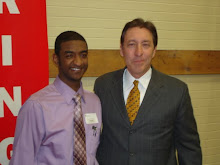
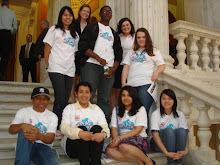



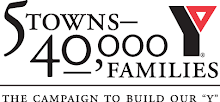

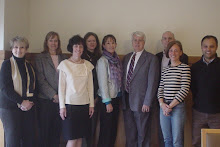.jpg)
